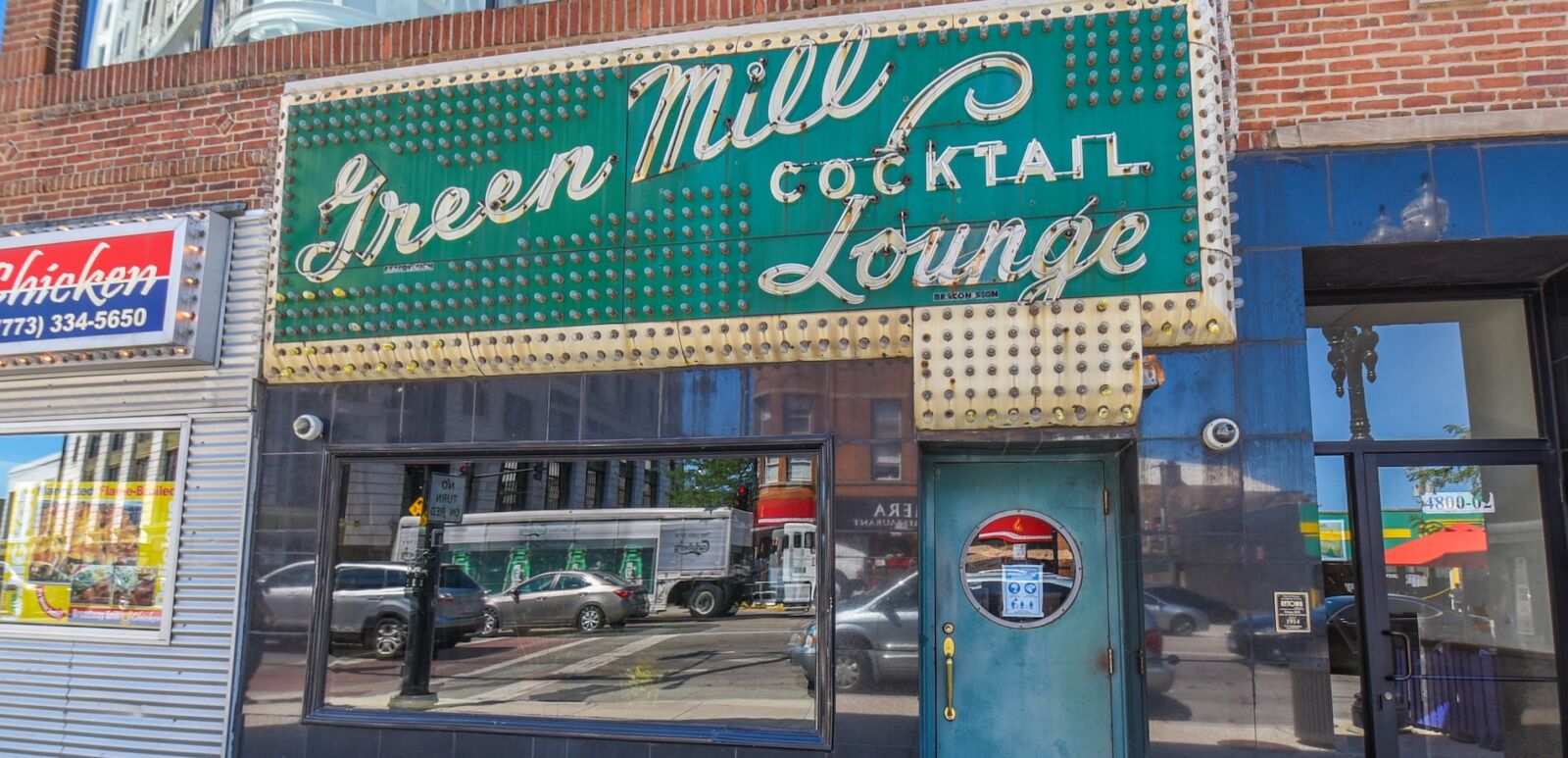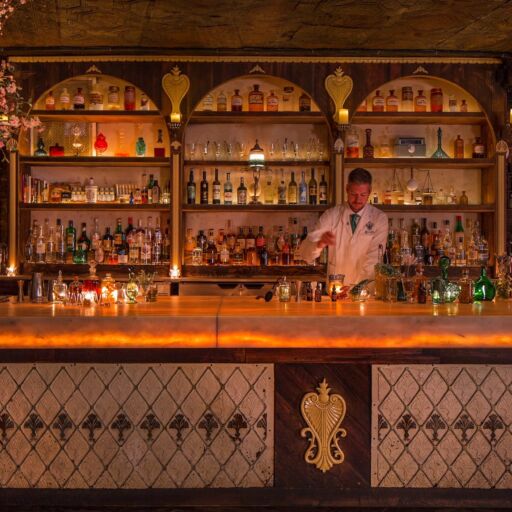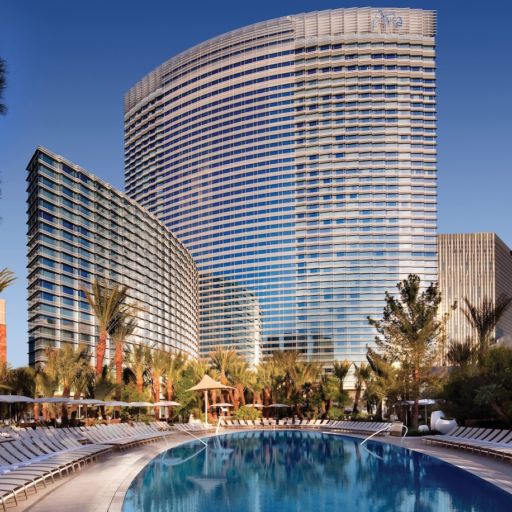It was a particularly gusty day in Chicago and I was running late to meet an ex-coworker who had relocated to the Windy City for what she said was a position at a prestigious law firm but for what I knew to be a well-paying excuse to eat Italian beef sandwiches and deep dish pies whenever she wanted. She told me to “find” her in the speakeasy hidden in The Green Door Tavern, so I hustled to a taxi, slid in the back and confidentially quipped, “take me to the green bar, please!”
When we pulled up to The Green Mill Cocktail Lounge, I ran inside the bar looking for my friend, only she was nowhere to be found. Confused, I slid into a booth at the end of the bar. “That’s Al Capone’s booth,” said an older woman as she put a candle on the table. “Where’s the speakeasy?” I said. She looked at me, laughed, and headed back to the bar. It took me 20 minutes to find out I was at the wrong place. It took just 10 more minutes to realize I had stumbled into a national treasure. I never met my friend that day, but I was lucky enough to drink an Old Style Beer and a shot of Malört whilst clinking glasses with Chicago’s history.
Across the United States, timeworn taverns and pubs act as living pieces of history where you can pull up a stool to early American drama. While many of these landmarks have undergone renovations, the best of the best highlight a bar’s distinct history while serving more modern food and drinks. Below, we’ve rounded up a list of some of the country’s most historically significant bars along with the stories that have made them legendary. Add these places to the itinerary of your next summer road trip for a museum-adjacent pit stop that pairs well with a pint of beer.
Brittingham’s Pub – Lafayette Hill, Pa.

Just 26 miles away from Philadelphia by car, Brittingham’s Pub saw the thirteen American colonies become a country. It was established in 1743, between the founding of Jamestown and the signing of the Declaration of Independence, and has variably served as a dance hall, inn, pub, restaurant, and tavern. During the American Revolution, the bar went by the name The Trooper and is believed to have been a stop for George Washington. General Lafayette’s troops barracked at the inn after the 1777 Battle of Barren Hill and there are rumors of his soldiers engraving their initials in the root cellar which has since been sealed shut. Later in the 1800’s, the then inn was a stop on the Underground Railroad with a tunnel for those escaping to Canada. The tunnel ran to the St. Peter’s Cemetery and still exists today, though it’s also sealed off. The pub has since undergone major renovations, though wooden nooks, windows, and its sturdy foundation remains. Visit for dinner and order bar favorites like chicken pot pie, Guinness lamb stew, and a pint of beer. You know, colonial food.
Carousel Piano Bar & Lounge – New Orleans
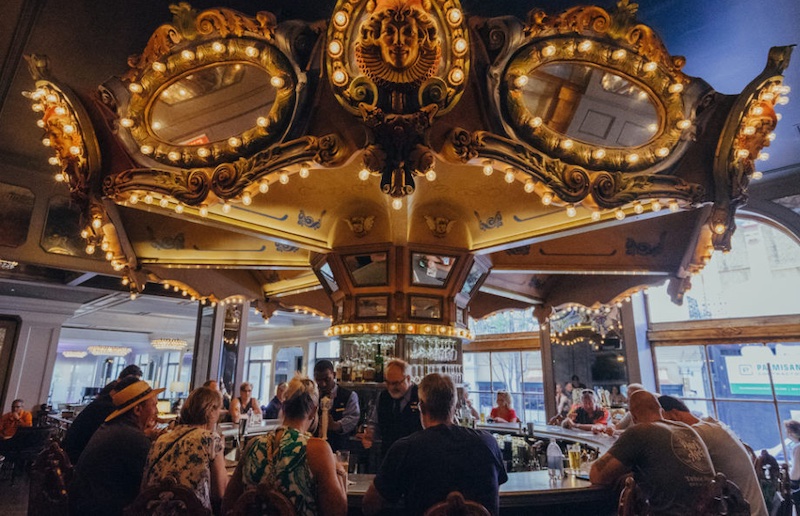
If the Carousel Piano Bar & Lounge isn’t on the itinerary of your next trip to New Orleans, then it should be. Located inside the Hotel Monteleone overlooking the French Quarter, the Carousel is the only rotating bar in the Big Easy, built on an opulent carousel top that illuminates the lounge at night. The circular bar turns via motor one revolution every 15 minutes and has 25 seats with colorful paintings of wildlife on the back of each chair. If you’re motion-averse, the lounge has additional booths and tables where you can enjoy a Vieux Carre cocktail and snacks like Oysters Rockefeller and Blue Crab and Corn Beignets. Ernest Hemingway, William Faulkner, Truman Capote, Michael Jordan and Tennessee Williams have all taken their turn at the bar, the latter of which mentioned the bar in two of his plays.
Fraunces Tavern – New York City
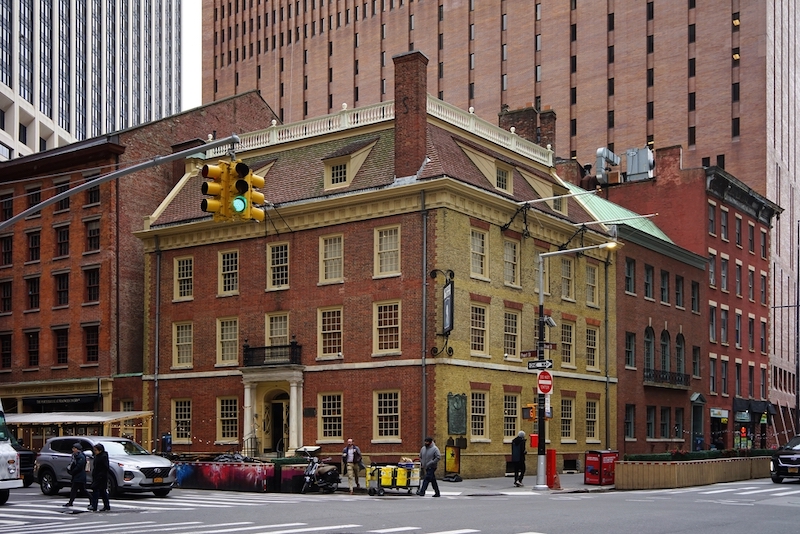
Standard history museums are great, but you can’t indulge in a pint of beer and a charcuterie board at most of them; that’s where Fraunces Tavern comes in. The historic pub was first built as a house in 1719 before it was converted into a tavern by namesake Samuel Fraunces. The tavern has been owned by the Sons of the Revolution since 1904 and is rumored to be the oldest surviving building in Manhattan. Fraunces played a pivotal role as George Washington’s headquarters during the American Revolution and was said to be a venue for peace negotiations with the British, though we’re not sure if that was before or after the British Royal Navy sent a cannonball through the building’s roof. Today, the tavern is a full-scale restaurant with a mean brunch on the weekends. If you’re still hungry for history after your flatiron steak, visit the onsite museum to explore Fraunces history through exhibitions and artifacts.
The Green Dragon Tavern – Boston
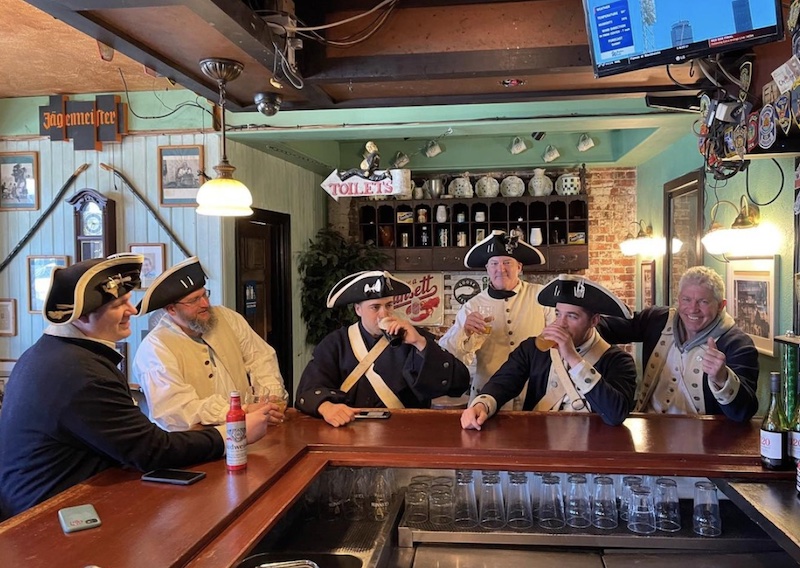
Boston is known for its history and The Green Dragon Tavern is one of the finest places to take in the cultural ether of The Cradle of Liberty. The celebrated tavern first opened in 1654 and was significant in establishing the freedom of Boston during the War of Independence, acting as a popular place for Freemason-led meetings by Grand Master John Hancock (of Declaration of Independence fame) and Sons of Liberty gatherings led by Samuel Adams (of Founding Father and beer fame). The Boston Tea Party was allegedly planned here and Paul Revere began his infamous ride to Lexington at the pub. The original North End building was demolished in 1832, but a pub fashioned as the new Green Dragon Tavern operates in the same neighborhood today.
Green Mill Cocktail Lounge – Chicago
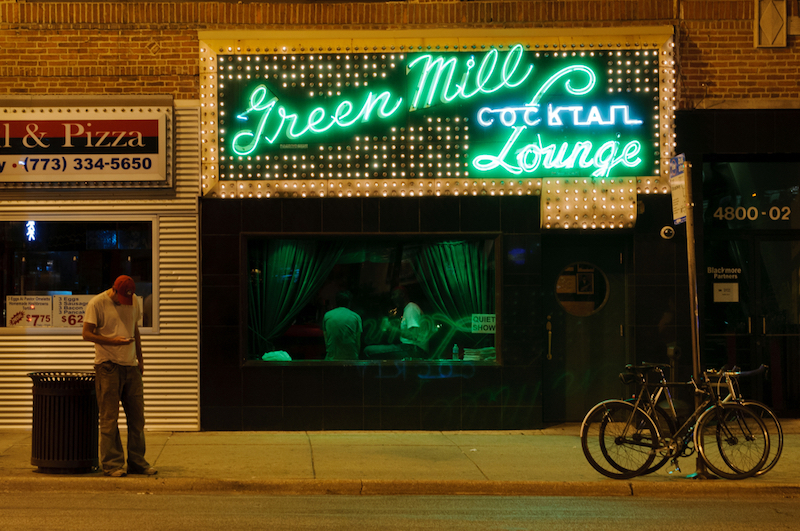
Al Capone’s infamous Chicago Outfit had deep roots at uptown’s Green Mill Cocktail Lounge and the crime family’s legacy is still alive and well in the dark club today. Originally named Pop Morse’s Roadhouse, the jazz club opened in 1907 and became known for its mob ties shortly thereafter when “Machine Gun” Jack McGurn became part-owner of the club. The story goes that in 1927, comedian Joe E. Lewis was attacked by McGurn’s men, an encounter that eventually inspired the 1957 film “The Joker Is Wild.” Al Capone’s favorite booth is located at the west end of the bar and the establishment still has a hatch that leads to underground tunnels Capone used for quick escapes. The Green Mill is also known for its post-Prohibition jazz performances by musicians like Billie Holiday and Louis Armstrong. Today, you can tuck into a cozy booth for a jazz performance every night of the week or stop by on Sunday night for the Uptown Poetry Slam – the longest running Poetry Slam in the country. If you can’t make it to the cash only establishment, you can see the Green Mill in films like “High Fidelity” and “Prelude to a Kiss.”
The Horse You Came In On Saloon – Baltimore
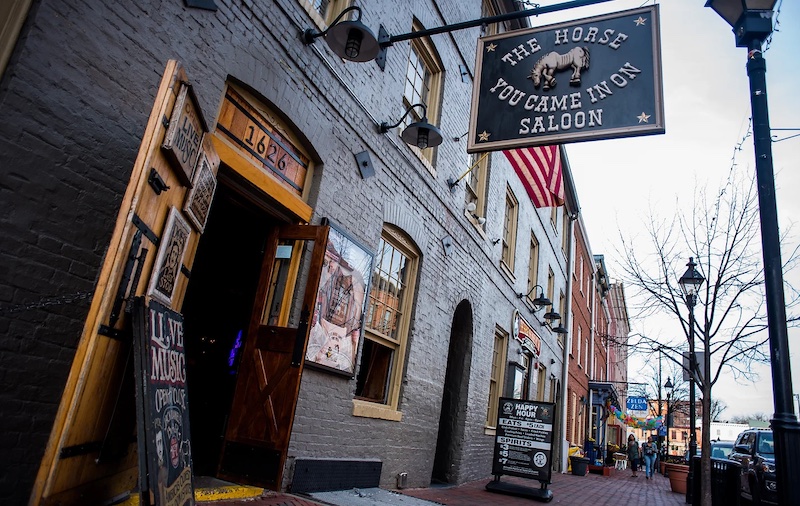
Established in 1775, The Horse You Came In On Saloon is the oldest continuously operating saloon in the country. The historic bar is located in a Colonial-era building in Baltimore’s Fells Point neighborhood just a stone’s throw from the Patapsco River. Often referred to as simply “The Horse,” the saloon claims to be the final place poet Edgar Allen Poe was seen before his death. Among the saddle-shaped seats in the 19th century era saloon is a designated seat named “Poe’s Last Stop.” While The Horse was once a popular haunt for sailors and shipbuilders, today it’s known as one of Baltimore’s most iconic landmarks.
McSorley’s Old Ale House – New York City
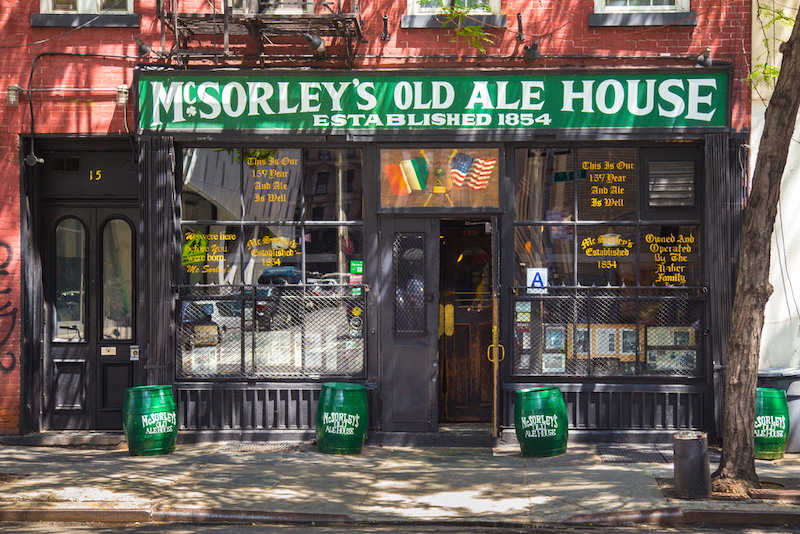
From the sawdust floors to the pair of Harry Houdini’s handcuffs that are connected to the bar rail, McSorley’s Old Ale House is a genuine New York relic. The walls of the Irish saloon are covered with artwork, newspaper articles, and pieces of history that haven’t been removed since 1910, like the wishbones hanging above the bar placed there by soldiers headed off to World War I. McSorley’s opened in the mid-1800’s and was one of the last “Men Only” pubs when it started admitting women in 1970. The saloon was also known for selling a near beer during the Prohibition era and has wet the famous whistles of Teddy Roosevelt, John Lennon, and Dave Von Ronk – the latter of which posed for his “Inside” album cover out front. Order a pint of the legendary McSorley’s Ale and make sure to abide by their one golden rule: “Be Good or Be Gone.”
Old Talbott Tavern – Bardstown, Ky.
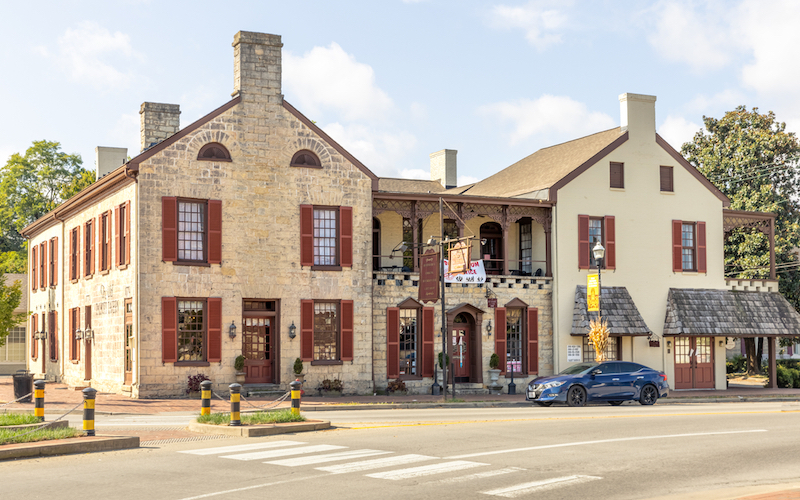
Bardstown’s Old Talbott Tavern is one of our favorite places to check out when visiting Louisville. Just a 45 minute drive from the Derby City, the tavern was built in 1779 and is the oldest surviving building in Kentucky and the oldest western stagecoach stop still in operation. The heritage stone edifice is a noteworthy example of Flemish bond stonework from the settlement period and the tavern was added to the National Register of Historic places in 1973. At the inn, each of the six rooms are named after a historical person who is believed to haunt the inn – give us your best shot, ye olde ghost of Jesse James. Other renowned guests include Daniel Boone, Andrew Jackson, William Henry Harrison, Abraham Lincoln, and Georges Rogers Clark, who used the Old Talbott as a base during the Revolutionary War. If you can’t swing an overnight stay, stop by the tavern and order some fried green tomatoes and a Hot Brown before heading back to Louisville.
The Palace Restaurant and Saloon – Prescott, Ariz.
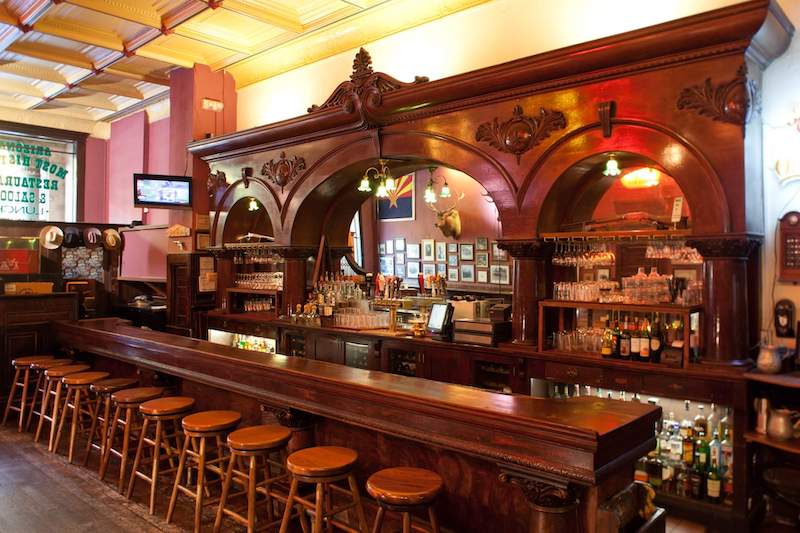
If hearing the word “Tombstone,” makes you picture Doc Holliday’s iconic handlebar mustache, then you’ve come to the right place. Roughly an hour and a half from Sedona by car, The Palace Restaurant and Saloon is on Prescott’s beloved Whiskey Row – a veritable playground for saloon aficionados. As the oldest frontier saloon in Arizona, The Palace exemplifies what life was like in the wild, wild west when the bar was first established in the late 1870’s. Both Wyatt Earp and Doc Holliday frequented the saloon and both had their share of dust-ups, with Earp killing two men during gunfights behind the saloon and Holliday killing a man during a knife fight inside (cue Ennio Morricone’s “The Good, the Bad, and the Ugly” theme). The original building was destroyed by the Whiskey Row fire in 1900 but was rebuilt by 1901 and is still open today, serving on-the-nose pub favorites like Wild West Wings and Jackalope Jumbo Onion Rings.
Round Robin Bar – Washington, D.C.
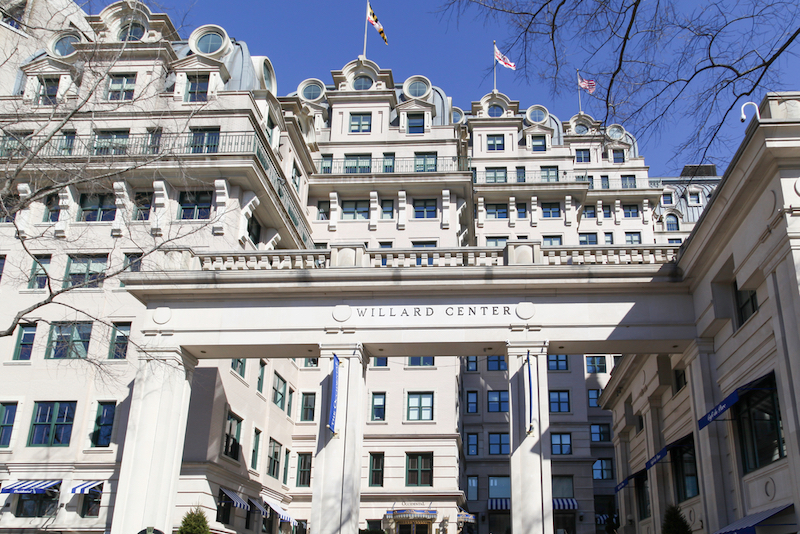
Located in the beloved Willard InterContinental Washington hotel, the Round Robin Bar is an oak-paneled lounge for imbibers looking to rub elbows with the who’s who of D.C. elite. The bar opened in 1847 and has since earned the nickname the “Oval Office of Bars” due to the décor and presidential patrons. While presidents have been known to stop here for a smart cocktail, you’re here to see Jim Hewes, a bartender and historian who oversees the cocktail program. Hewes has served cocktails here for nearly 40 years, through six presidential administrations, and has been known to treat patrons to a story about his years serving VIPs like Gerald Ford, Pele, and George Clooney. Settle in and order their signature cocktail, the Mint Julep, which was introduced to the bar by Kentucky Senator, Henry Clay. If Hewes is in, ask a question or two about the cocktail – legend has it he owns a handwritten copy of the recipe scribed by Clay himself.


